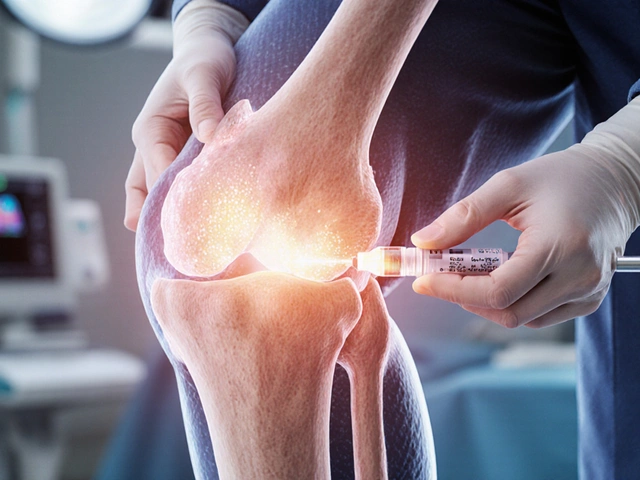Imagine dealing with a pain so sharp, so unrelenting, that even your memories and emotions feel raw. Cancer patients describe pain that punches through every defense, leaving nothing but the urge for the nightmare to end. Why do some cancer treatments hurt so much? Is there one that's worse than the rest? That’s what people feel hesitant to ask, but curious to know. It's not an easy conversation, but it's one that saves others from unexpected agony. So, let’s pull back the curtain and look at what really happens when cancer treatment meets pain.
The Reality of Pain in Cancer Treatment
Let’s get one thing straight—cancer itself can cause insane amounts of pain, whether it’s from tumors pressing on nerves, bones, or organs. But often, the therapy meant to cure people is what tips the scale. And among all, some treatments are notorious for being exceptionally brutal. Have you ever heard stories of chemotherapy making your whole body ache, or radiation therapy burning skin right down to raw wounds? Patients talk about feeling like their insides are on fire, joints screaming with every movement, or nerves turning to live wires sending never-ending shocks.
Pain isn’t the same for everyone. Some people breeze through therapies with minor side effects. But for many, treatments like bone marrow transplants, head and neck radiation, or certain types of chemo trigger pain on levels most of us just can't imagine. You might be shocked to learn that about 70% of people with advanced cancer deal with moderate to severe pain during their treatment. Not just for a day or two, but often for weeks, if not months. That kind of pain isn’t just physical—it wrecks sleep, mood, relationships, and appetite. Sleep loss and nerve pain can spiral into a monster of their own, leaving folks desperate for even a little relief.
There isn’t a single "most painful" treatment that everyone dreads. It depends on so many things—cancer type, location, personal pain threshold, and the specific therapy plan. Still, most oncologists and nurses agree that certain procedures have built a reputation for delivering some of the harshest experiences. Let’s get into the specifics.

Which Cancer Treatments Hurt the Most?
Bone marrow transplant, also called a stem cell transplant, is widely considered to be one of the most painful, grueling treatments. Why? Picture this: before the transplant, patients get hit with massive doses of chemotherapy and sometimes radiation. This isn’t your regular chemo session. We're talking about obliterating every fast-growing cell, including the good ones. Mucous membranes in the mouth, gut, and everywhere else are destroyed, often leading to mouth sores so raw that people can’t eat or even swallow their own saliva. Even breathing becomes torture. Patients wind up hooked up to feeding tubes and powerful painkillers, and some admit they might not have done it had they known what was coming.
Then there’s radiation therapy straight to the head and neck. This treatment can burn the skin, turn swallowing into a nightmare, and leave the mouth bone-dry for life. People report losing their sense of taste, mouth ulcers that won’t heal, and a constant raw feeling in their throat. Imagine trying to talk, eat, or even open your mouth when it feels like sandpaper and acid attacks rolled into one. And yet, for cancers of the mouth, throat, or tongue, this treatment is the gold standard. Some patients actually rank this as worse than anything else they’ve tried, including surgery or regular chemo.
Pancreatic cancer brings another level of suffering, both from the tumor itself and the treatments. Because the pancreas sits deep inside the body, tumors often press on nerves. Chemo regimens for this cancer, like FOLFIRINOX, are aggressive and notorious for smashing body systems with pain, fatigue, and nausea for days after every cycle. Pain from the tumor itself adds a sinister edge—often nothing short of crippling.
Multiple myeloma and certain leukemia treatments can bring "tumor lysis syndrome," where cancer cells die off so fast the body can’t get rid of all the debris. This dumps toxins everywhere and brings on joint pain so brutal that even morphine doesn’t always help. Add in the bone pain—common with blood cancers—and it’s easy to see why patients are wary long before they reach the hospital.
It doesn’t stop there. Certain chemotherapy drugs, like paclitaxel or cisplatin, can fry nerves and leave people with neuropathy—a constant burning, tingling pain in hands and feet that can last for years. For some, it means they never get back to normal, living with chronic discomfort that rarely lets up.
| Type of Treatment | Common Pain Issues | Percentage of Patients Affected |
|---|---|---|
| Bone Marrow Transplant | Mouth sores, severe mucositis, gut pain | 60-85% |
| Head/Neck Radiation | Burns, severe throat pain, mouth ulcers | 50-90% |
| Pancreatic Chemo | Joint pain, nausea, tumor pain | 60-70% |
| Certain Chemo (e.g., paclitaxel) | Neuropathy, burning pain in limbs | 50-70% |
| Blood Cancer Treatments | Bone pain, joint pain, tumor lysis syndrome | 40-60% |
Is there a clear winner for the "most painful" tag? Bone marrow transplant gets the most votes from doctors and patients alike. This isn’t just physical agony, but psychological pain too. Constant hospital stays, full isolation due to infection risk, and days without food or comfort—it tests every limit you’ve got. Yet, some say the unexpected pain from head and neck radiation is right up there too. What’s worse often comes down to personal experience, but nobody walks away unscathed.

Ways to Cope With the Agony and What Helps
It makes sense to dread pain at this level, but there’s a silver lining: pain management is a huge priority in cancer care now. Modern hospitals don’t force you to “tough it out.” Specialists use a mix of medications and therapies to keep suffering controlled. Opioids, anti-nausea drugs, and nerve pain pills get prescribed quickly. Many units allow patient-controlled analgesia (PCA), meaning patients press a button for a dose whenever the pain spikes. This gives some actual control during a time when everything else feels stolen away.
Patients often try extra tricks on top of meds. Ice chips and mouth rinses bring relief from mouth sores. Thick shakes slide down easier than water. Some hospitals even bring in music therapy or guided meditation for distraction. One trick that surprises people? Swishing with salt and baking soda several times a day. It sounds too simple, but it does help soothe the open wounds lining the throat and mouth.
Hydration is everything. If you can’t drink, you’ll feel way worse. Saline drips, moist sponges, and even cool mist humidifiers keep things less raw. On the tougher days, just keeping the mouth wet can feel like an impossible win. It’s the little victories that matter: finding one food you can tolerate, being able to sleep a bit longer, not needing to take every single pain pill. Those small mercies keep people moving forward, one step at a time.
People also lean heavily on their care teams and loved ones. The most successful survivors often have a tight network—someone to bring in soup, offer gentle massages, or just keep the mood light. There’s growing evidence that emotional support and routine check-ins with counselors cut the risk of severe depression or trauma after these treatments. Some hospitals have "pain management" teams available 24/7 now, and they’ll adjust meds by the hour if needed. If a treatment plan isn’t working, doctors will listen and swap medicines or methods, rather than insisting people just push through.
For those headed toward one of the tougher treatments—like a stem cell transplant or aggressive radiation—doctors often recommend "pre-habbing" with physical therapy or nutrition sessions ahead of time. Building even a little muscle strength or boosting your reserves makes a real difference. Some people even manage to go through the roughest days faster and easier when they went in better prepared.
Education matters too. Knowing what’s coming and what options exist lets patients call the shots if something’s not right. If mouth pain suddenly spikes, don’t just wait for it to pass—let the staff know. There may be a new rinse, a patch, or even a topical pain reliever that could help but isn’t mentioned automatically.
Tech has started changing things as well. Cooling caps help prevent some types of nerve pain. Oral gels and refrigerated lozenges are in vast supply now. There’s research into low-level laser therapy for healing mouth ulcers, and trials for new anti-inflammatory drugs that do more than just work as band-aids.
But there’s one thing, time after time, that gives people strength: knowing the pain has an end. Many survivors say it was that light at the end of the tunnel—the hope for normal days again—that let them get through even the darkest moments. Even with these brutal therapies, they wouldn’t trade what they endured, because the pain is what gave them another shot at life.





